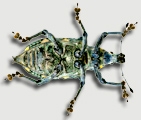Rykken JJ, Chan SS, Moldenke AR.
Headwater riparian microclimate patterns under alternative forest management treatments. Forest Science. 2007;53 (2) :270-280.
AbstractManagement of headwater streams and their riparian zones has included the implementation of forested riparian buffers, which are intended to protect ecological processes (such as microclimate) and biota, but the appropriate widths for these buffers have been widely debated. We measured the magnitude and extent of microclimatic gradients associated with headwater streams in mature unmanaged forests, and determined whether these patterns were maintained in clearcut harvested units with and without a 30 m-wide riparian buffer on each side of the stream. We measured air temperature, soil temperature, and relative humidity between I and 70 m from the stream in five replicate blocks of three treatments each in western Oregon. Results indicated the strongest stream effect on air temperature and relative humidity to be within 10 m of the stream in all management treatments at 3:00 pm, and gradients were evident to 20 m in the forested treatment. The clearcut was significantly hotter (air and soil) and drier than either the riparian buffer or the forest treatments at 3:00 pm. The riparian buffer and forest had similar microclimates at all distances from the stream, suggesting that the 30-m buffer adequately protected the riparian microclimatic gradient. We hypothesize that the strong stream effect on microclimate in the riparian zone serves a critical role in mitigating the influence of microclimatic "edge effects" associated with the forest-clearcut edge. Biota dependent on cool, humid microclimates provided by riparian zones will benefit from the implementation of riparian buffers in harvest units.
